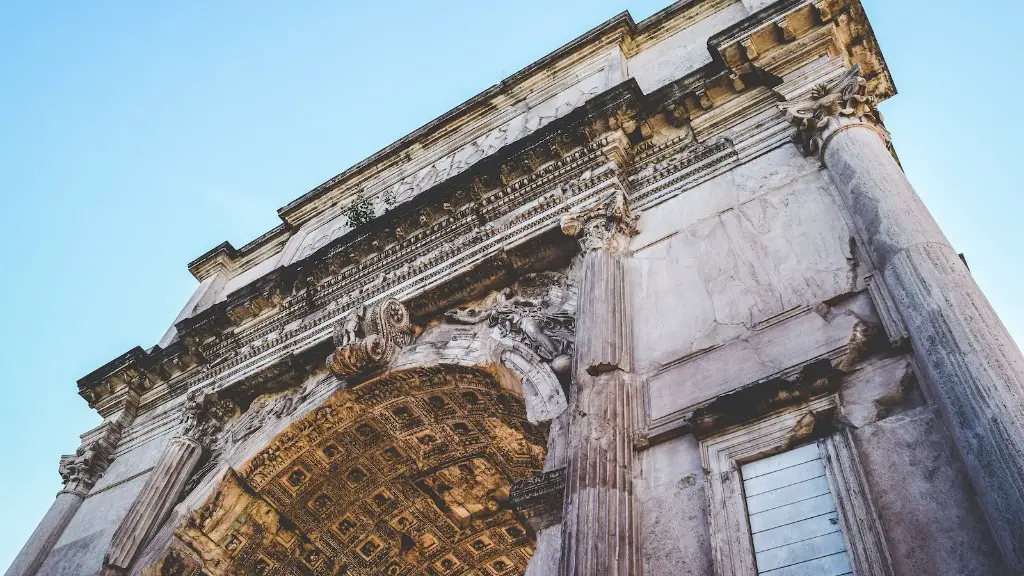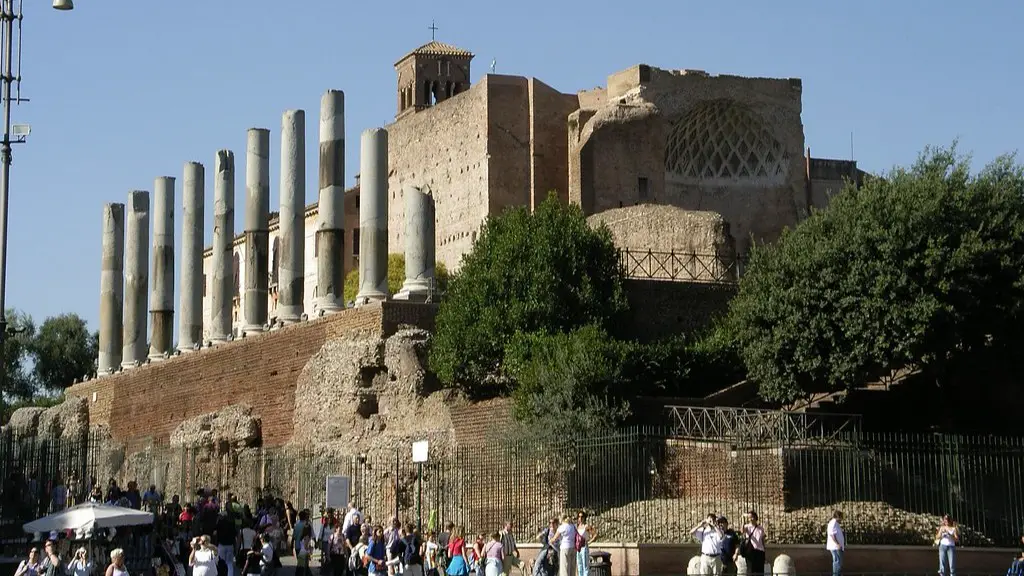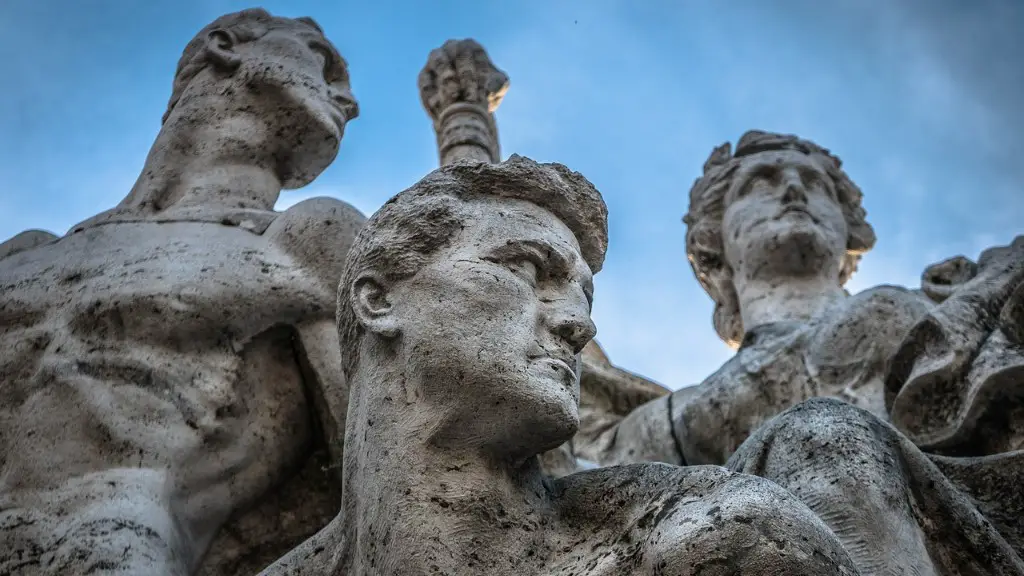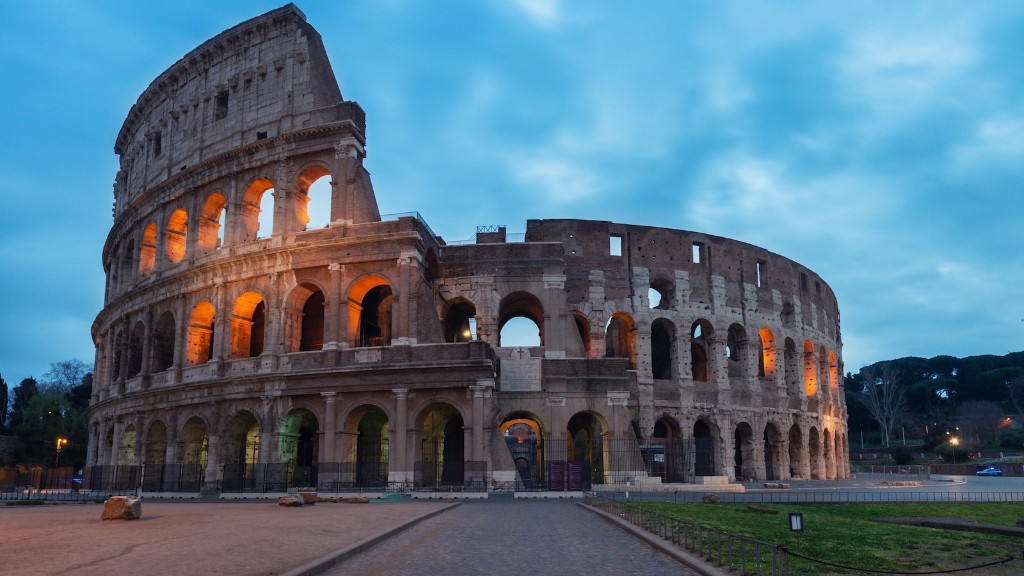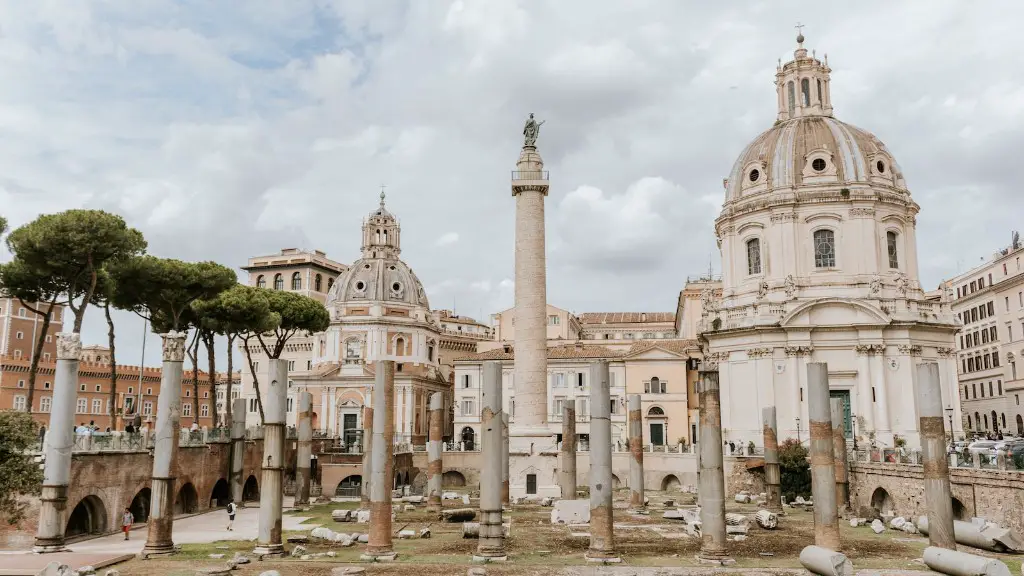The average temperature in ancient Rome fluctuated significantly from one decade to the next and varied drastically from one region to the next. Italy itself is prone to big swings in annual temperature, depending on the season, due to its unique geographic location. Ancient Rome’s typical temperature depended on many factors including latitude, elevation, seasonal fluctuations, and the influence of the Mediterranean Sea.
In general, ancient Rome experienced fairly mild temperatures year round that could range anywhere from upper 50s to the mid 80s Fahrenheit (15 to 30 degrees Celsius). The historical records for Italy reveal that ancient Rome experienced a slightly cooler and wetter climate than the present, with rainfall averaging 40 inches a year.
During the summer months, temperatures in Rome could reach the mid 90s Fahrenheit (33 degrees Celsius). On the hottest days, temperatures often topped 100 Fahrenheit (38 Celsius). Extreme heat waves, however, were short-lived, typically followed by cool evenings or a sudden rainstorm. In the winter months temperatures would generally fall to the upper 40s Fahrenheit (8 degrees Celsius) with occasional cold spells. During the winter of 536, according to historical records, temperatures around Rome dropped sharply giving rise to a global cooling period.
The prevailing climate and temperature in ancient Rome had a tremendous impact on the daily lives of citizens. In the summer months, peoplehad to endure not only hot days but also humid nights. The heat was so intense that citizens often slept on the roofs of their homes or traveled to the countryside to escape the sweltering heat. In the winter, citizens had to be rid of their light summer clothing and replace them with thicker, heavier clothes to ward off the cold.
In addition to the daily temperatures, the seasonal climate of ancient Rome had a big impact on the local economy. In winter, the area was known for its robust wheat, barley, and olive oil production. In spring and summer, the area was known for its high production of grapes and olives. In addition, the ancient Romans used the changing temperature levels to optimize the production of wine.
From an architectural standpoint, ancient Romans also took full advantage of their moderate climate by constructing buildings that made use of both natural daylight and operable windows to provide ventilation. While some buildings were built with thick insulation to keep out the cold, many Roman homes used open-air courtyards and other features in order to maximize the amount of air circulation and natural light throughout the year.
Those living in ancient Rome adapted to the changing temperatures in various ways. During harsh winter months, citizens would often rely on hot soups and stews to stay warm and healthy. During the hotter parts of the year, citizens would seek out waterweeds and other natural foods to stay hydrated and maintain their energy levels. Ancient Romans also had an expansive knowledge of medicine and used special techniques to prevent sunburns and other common problems caused by extended exposure to the Summer sun.
The Impact of War on Ancient Rome’s Temperatures
The wars of the Roman Republic and early Roman Empire had substantial impacts on the temperatures of ancient Rome. Constant military campaigns meant that vast swaths of forests were cut down for fuel and camp construction, reducing the area’s tree density and its ability to absorb the suns heat. As a result, the average temperature of Rome began to climb higher in the summer months leading to a feeling of “stickiness” throughout the day.
In addition to contributing to a change in temperature, the military campaigns of the Roman Republic and early Roman Empire also played a role in accelerating large-scale environmental degradation. The constant mobilization of troops throughout the empire resulted in the decline of soil fertility and the disruption of local ecosystems.
Changes to Ancient Rome’s Temperature Over Time
The temperature of ancient Rome has changed significantly over time, most notably during the period known as the Little Ice Age. The Little Ice Age occurred between 1350 and 1850 and is characterized by a decrease in global temperatures. Italy was disproportionately affected, experiencing a decrease in temperature by an average of 2 Celsius (4 Fahrenheit). During this period, Rome experienced a significant decrease in rainfall and often experienced frost and snow during the winter months.
As global temperatures have risen in the past century, temperatures in Italy and Rome have steadily gone up. Rome now experiences an average temperature of 70.3˚F (21.3˚C) throughout the year with temperatures in the summer months occasionally reaching the mid-90s (35˚C). Due to the Mediterranean climate, rainfall remains an important part of the region’s weather, with a yearly average of 24 inches (600 mm).
The Impact of Global Warming on Rome’s Temperature
Of great concern to both residents and experts is the potential impact of global warming on the climate of Italy and ancient Rome. The most recent scientific consensus suggests that temperatures in the region will increase even further in the coming decades, leading to higher summer highs and a longer period of extreme temperatures. Already, experts have noted how the warmer climate could affect the wheat and barley harvest, as well as impair the production of grapes and olives.
Climate scientists have also warned that the increased temperatures could result in more frequent heat waves and a greater risk of drought, both of which could have a major impact on the local economy and ecosystem. In addition, experts have predicted that rising sea levels and changing wind patterns could eventually lead to warmer waters and more destructive storms and hurricanes in the Mediterranean Sea.
Preserving Ancient Rome’s Temperature
Environmentalists and experts are aware of the potential impacts of global warming on ancient Rome and have advocated for policy and lifestyle changes to reduce the amount of emissions released into the atmosphere, thereby minimizing the threat to the region’s current climate. In particular, environmentalists have pointed to the need for governments to shift their energy sources away from fossil fuels and towards renewable sources that are more environmentally friendly.
Citizens, too, can play a role in the preservation of ancient Rome’s temperature. By opting for energy-efficient lighting or appliances, as well as taking advantage of public transportation or carpooling services, individuals can help reduce their personal carbon footprint. Individuals are also encouraged to participate in reforestation initiatives or sign up for environmentally-friendly initiatives to help clean up local waterways and other ecosystems.
The Benefits of Ancient Rome’s Temperature
Though the potential impacts of global warming have been well documented, the temperature of ancient Rome still offers many benefits that are worth preserving. In particular, the temperate climate is ideal for outdoor activities throughout the year, providing citizens with an opportunity to enjoy the outdoors without the worry of extreme temperatures. Additionally, the seasonal climate of Rome has been a boon for its local economy and has allowed citizens to maximize the production of olives, grapes, and other crops.
The climate of ancient Rome is also very conducive to the appreciation of the arts. The warm, dry air of day creates ideal conditions to visit the city’s various museums and other attractions, while the cool evening temperatures serve as a reprieve from the heat of the day. Taken together, the climate of ancient Rome provides for a unique and wonderful experience that will remain part of Italy’s culture and history for many more generations to come.
